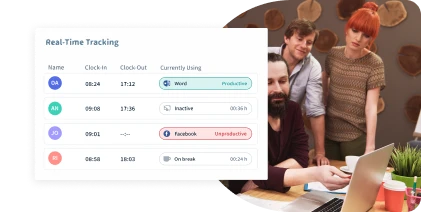Table of Contents
Key performance indicators (KPIs) play a crucial role in assessing the value and success of businesses.
For startup companies, these indicators offer valuable insights into areas for sales expansion and ensuring long-term financial well-being.
Moreover, a report revealed that startups focusing on KPI-driven growth are 46% more likely to exceed their business objectives.
If you’re involved with a startup, understanding KPIs can assist you in effectively measuring goals and driving the growth of your workplace.
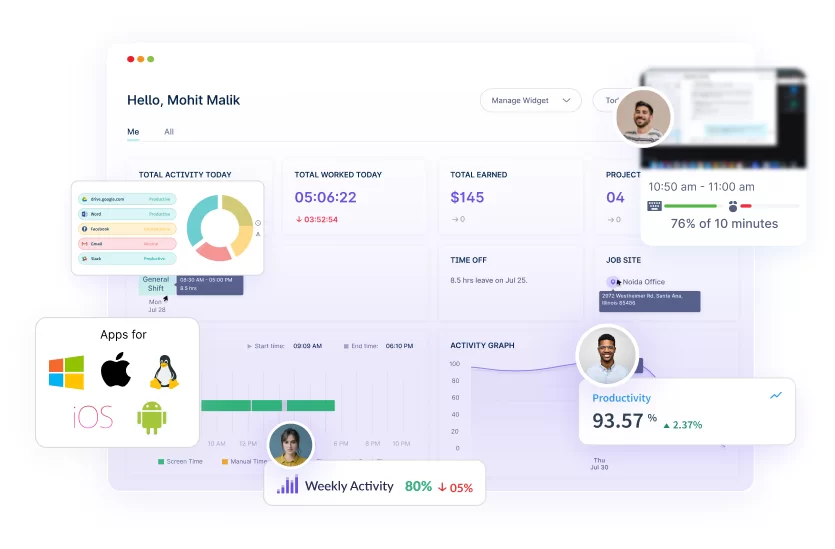
This blog post discusses the concept of key performance indicators, presenting a comprehensive list of essential KPIs specifically tailored for startups.
Let’s dive in:
Understanding Key Performance Indicators (KPIs)
Key Performance Indicators (KPIs) are measurable metrics organizations use to assess performance and achieve specific goals.
They serve as crucial benchmarks for evaluating success and progress in various areas, such as:
- Sales
- Customer satisfaction
- Operational efficiency
Focusing on relevant KPIs enables you to make informed decisions and optimize their strategies for sustained growth.
1. Financial Metrics for Startup Growth
Here are some important financial metrics for startups:
Monthly and Annual Revenue Growth
Monitoring the monthly and annual revenue growth is vital for a startup’s financial health.
It helps track the increase or decline in revenue over specific periods, providing insights into business performance.
Consistent positive growth signifies a thriving business, while negative growth may indicate areas that need improvement or optimization.
Burnout and Attrition Rate
Tracking burnout and attrition rate is crucial for maintaining a motivated and productive workforce.
Burnout can decrease employee engagement and productivity, impacting overall business performance.
Likewise, a high attrition rate may suggest organizational issues that need attention, such as work culture or employee satisfaction.
Workstatus can play a significant role in addressing burnout and reducing attrition rates in startups by providing valuable insights and facilitating proactive measures.
Here’s how Workstatus can help:
Workload Management: Managers can monitor individual employees’ workload and ensure equitable task distribution. Provide additional resources to alleviate stress and reduce burnout by identifying employees overloaded with tasks.
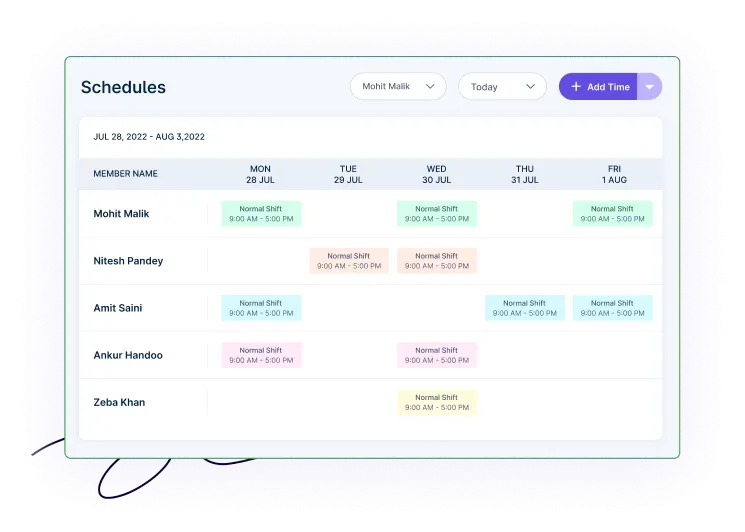
Early Warning System: With features like idle time detection and inactivity alerts, Workstatus can help identify employees who may be disengaged or struggling with their workload. Addressing such issues promptly can prevent burnout and reduce the likelihood of employees leaving your startup.
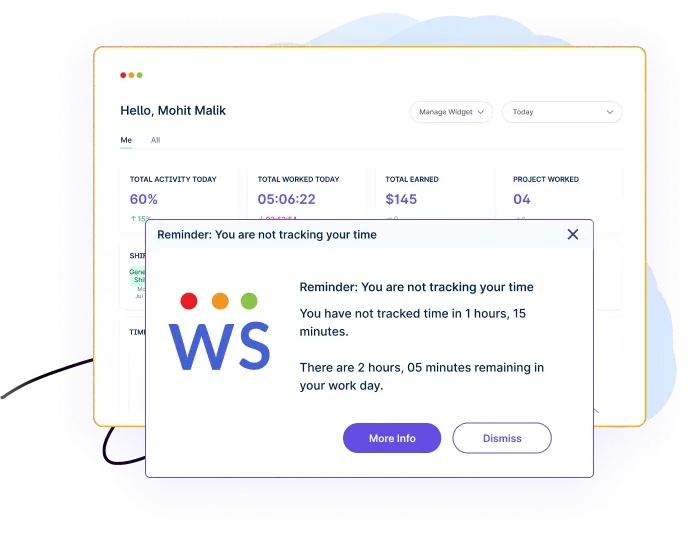
Return on Investment (ROI)
ROI is a fundamental financial metric that assesses the profitability of investments made by the startup.
Calculating the ROI helps determine if investments in marketing, product development, or other areas generate desirable returns.
A positive ROI indicates that investments yield profits, while a negative ROI signals the need to adjust or reallocate resources.
2. User Engagement Metrics
Here are some important user engagement metrics for startups:
App & Website Usage
App and website usage metrics provide valuable insights into how engaged users are with the platform.
Tracking the number of active users, session duration, and frequently accessed features helps startups understand user behavior.
By analyzing these metrics, companies can identify areas that need improvement and optimize the user experience to enhance engagement and retention.
Looking to track time wasted on irrelevant apps and websites?
You can use Workstatus to track the applications and websites employees use, helping identify distractions and potential time-wasting activities.
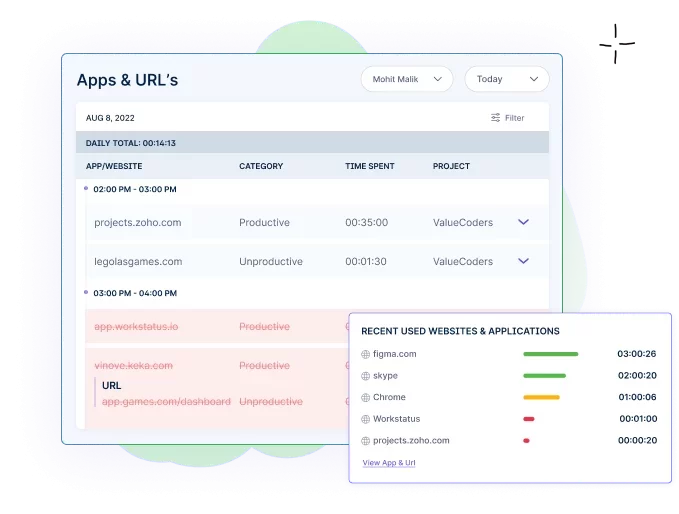
Net Promoter Score (NPS)
NPS measures customer loyalty and satisfaction.
It asks users to rate (on a scale of 0 to 10), how much they are satisfied with the product or service.
Users are classified as promoters, passives, or detractors based on their responses.
A higher NPS indicates a strong base of loyal customers who will likely promote the startup to others, driving growth and success.
Churn Rate
Churn rate is a critical metric measuring the rate customers stop using a product or service over a specific period.
A high churn rate can indicate dissatisfaction or lack of engagement among users, potentially leading to revenue loss.
By closely monitoring and addressing the factors contributing to churn, startups can improve user satisfaction and retention, fostering long-term growth.
3. Operational Efficiency Metrics
Here are some important operational efficiency metrics for startups:
Project or Task Completion Time
Project or task completion time is a crucial operational efficiency metric that measures the time taken to finish assignments or projects.
By analyzing this metric, startups can identify workflow bottlenecks, optimize processes, and enhance productivity.
Reducing completion time leads to quicker project delivery, increased efficiency, and improved customer satisfaction.
Workstatus can help in this area with features such as:
Real-time task tracking: Workstatus allows real-time monitoring of task progress, enabling managers to identify delays and take prompt actions.
Task status updates: Team members can update task statuses, providing transparency and accountability throughout the project lifecycle.
Historical data analysis: Get historical data on task completion times, helping identify trends and areas for improvement.
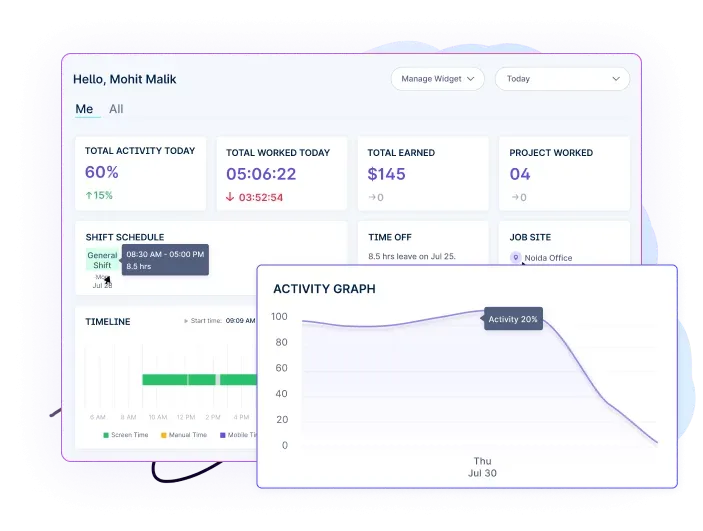
Employee Productivity
Employee productivity is a vital metric that assesses how efficiently team members utilize their time and resources to accomplish tasks.
By tracking individual and team productivity, startups can identify top-performing employees and areas where additional support or training may be required.
Improving employee productivity directly impacts a company’s output and profitability.
Workstatus offers several features to enhance employee productivity, including:
Performance analytics: Use performance analytics, enabling managers to recognize top-performing employees and support those who need it.
Integration with Project Management Tools: Workstatus integrates with tools like Zoho projects, Trello, etc. It enables startups to track employee productivity within specific projects and tasks.
Customizable Productivity Reports: Startups can generate customizable productivity reports using Workstatus data. These reports provide valuable insights into employee performance and time allocation, aiding data-driven decision-making.
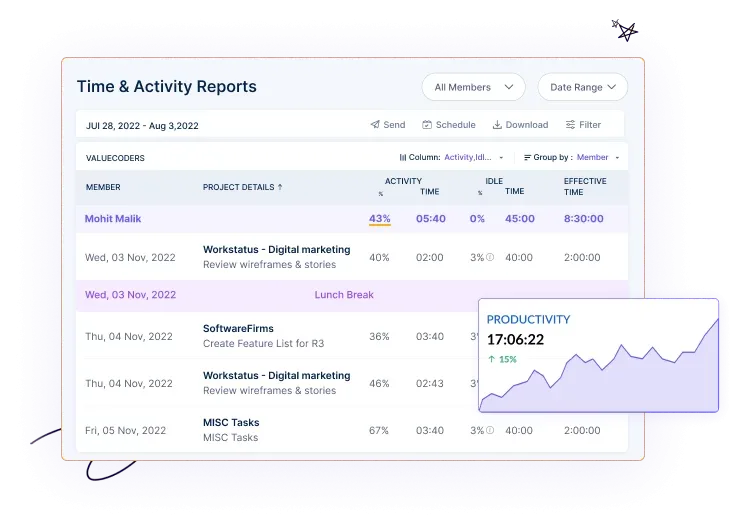
Time and Attendance Tracking
Time and attendance tracking measures the punctuality and regularity of employees in the workplace.
It helps startups ensure employees adhere to work schedules, reduce absenteeism, and maintain a disciplined work environment.
Proper time and attendance management contribute to smoother operations and improved efficiency in the organization.
Workstatus facilitates this process with the following features:
Automated time tracking: Workstatus automatically records employee work hours, reducing manual input and errors.
Geolocation and geofencing: The platform allows geolocation tracking to verify employee locations during work hours, ensuring remote teams stay on track.
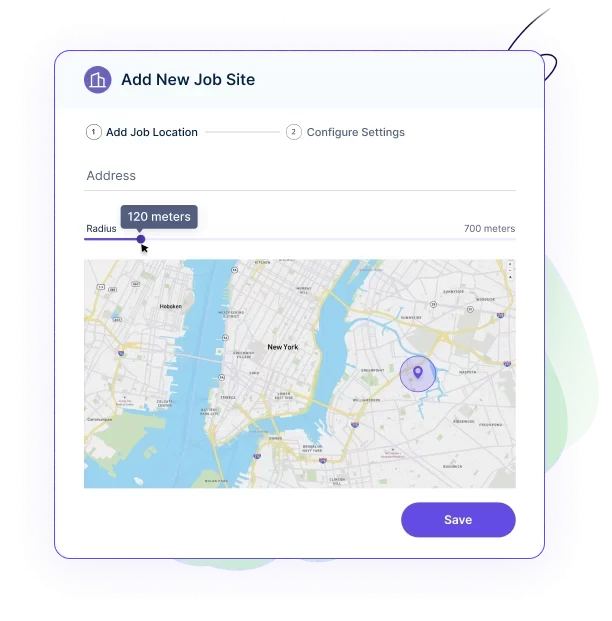
Overtime monitoring: Monitoring overtime hours, enabling startups to manage employee workload and maintain a healthy work-life balance.
Some Case Studies For You
Read real-life stories of startups using Workstatus for time-tracking, task management, and more. And see what they got in return.

Overcoming Challenges in KPI Tracking
In this section, we will discuss some important ways to overcome challenges in KPI tracking:
Adapting to Remote Work Culture
The shift to remote work can bring challenges in KPI tracking as traditional methods may no longer be applicable.
Startups must invest in suitable digital tools and platforms, like collaborative dashboards and time tracking tools, to collect and analyze KPI data effectively.
Additionally, fostering a culture of transparency among teams is vital to ensure everyone is aligned with KPI objectives and progress.
Analyzing and Acting on KPI Insights
While tracking KPIs is essential, interpreting the data and taking meaningful actions can be challenging.
Startups must have a clear process in place to analyze KPI insights regularly.
It involves identifying patterns, trends, and areas for improvement.
It’s crucial to involve relevant stakeholders and use KPI insights to drive decision-making, strategy adjustments, and resource allocation.
Regular reviews and feedback loops help ensure continuous improvement based on KPI performance.
By addressing these challenges, you can harness the power of KPI tracking to optimize performance, adapt to changing circumstances, and drive long-term growth.
Closing Thoughts
Key Performance Indicators (KPIs) provide valuable insights into various aspects of the company, enabling data-driven decision-making and strategic planning.
By continuously monitoring and optimizing KPIs, you can navigate challenges, maximize productivity, and propel your ventures towards sustainable growth and achieving their goals.
FAQs
Q: How do KPIs contribute to startup success?
A: KPIs provide valuable insights into various aspects of the business, enabling data-driven decision-making and helping startups optimize strategies for growth and profitability.
Q: How do I choose the right KPIs for my startup?
A: Select KPIs that align with your startup’s objectives and focus on areas critical to its success, such as revenue growth, customer satisfaction, and operational efficiency.
Q: Can KPIs be used to assess the success of marketing efforts?
A: Yes, KPIs like conversion rate, customer acquisition cost (CAC), and return on investment (ROI) help measure the effectiveness of marketing campaigns and guide marketing strategy improvements.

